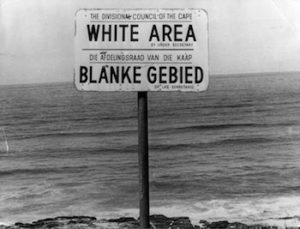
*On this date in 1950, the Population Registration Act No. 30 of 1950 came into effect in South Africa, marking the beginning of South African Apartheid.
This law required people to be identified and registered from birth as one of four distinct racial groups: White, Coloured, Bantu (Black African), and Other. It was one of the 'pillars' of Apartheid. Race was reflected in the individual's Identity Number.
Installed by South Africa's National Party, the Act was characterized by humiliating tests that purported to determine race through perceived linguistic and/or physical characteristics. The wording of the Act was imprecise, but it was applied with great enthusiasm. The South African Office for Race Classification was established to oversee the classification process of racial groups. Superficial appearances, social standing, and general acceptance were each evaluated, meaning reclassifications would be uncommon due to their social nature.
For example, a Black man was typically defined as a "Black man" and was accepted as a White or Coloured man due to his dark appearance. Other obvious examples include hair color, facial features (such as nose and lip shape), spoken language, acquaintances, friends, relatives, place of employment, and overall social and economic status.
As the decades came to pass and due to external and internal social pressures forced on the South African government by other nations to get rid of Apartheid, the Population Registration Act of 1950 was finally repealed by the South African Parliament on June 17, 1991. South Africa's Apartheid would end officially in 1994.